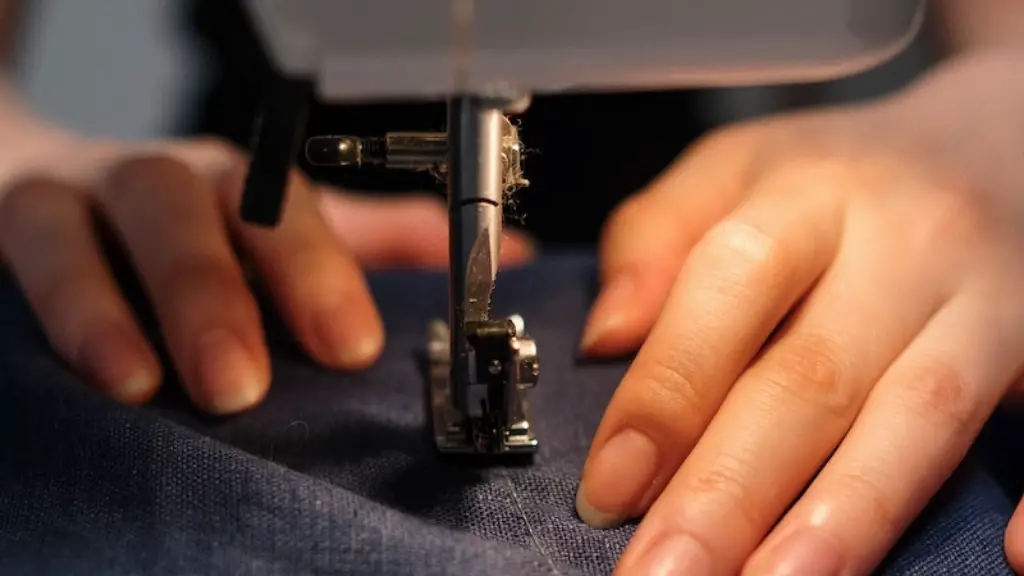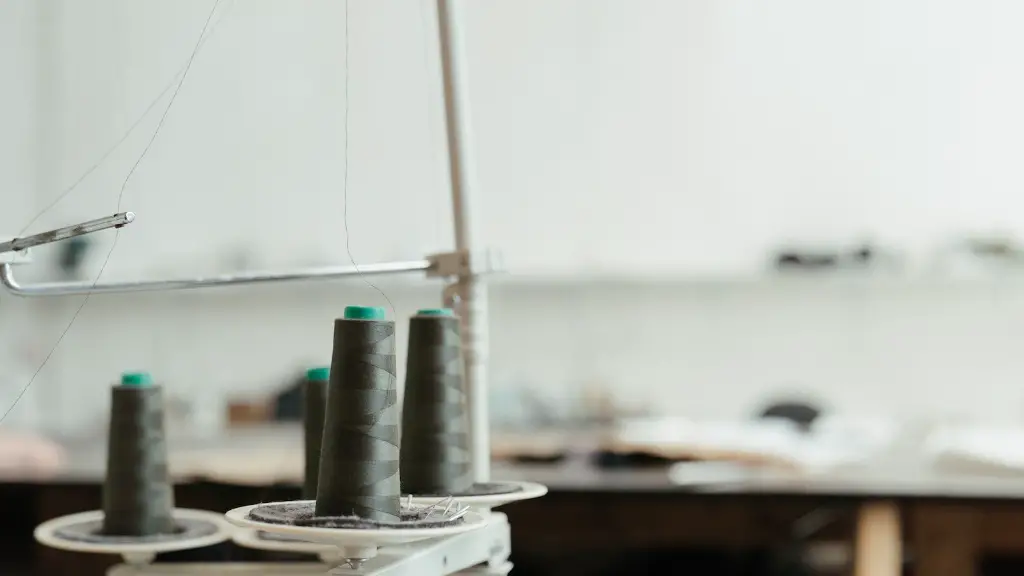Quilting is an immensely fulfilling activity, and although the result may be daunting to those who don’t come to it with the right set of skills, learning it can be surprisingly easy. When it comes to quilting, having the right equipment can make all the difference. For those who already have a regular sewing machine, it can be used for machine quilting simply by following these steps.
Firstly, the presser feet need to be changed. When it comes to machine quilting, a walking foot is the best choice, as it holds the top and bottom fabrics together and prevents it from bunching up when sewing. For those using a regular sewing machine, a quilting bar attachment will give users better control and smoother quilting and stitching.
Next, threading the machine is critical. Cotton thread is the best option as it is both strong and long-lasting, so it should be used for both the bobbin and the needle. Users should select a color that complements the quilt they are making and ensure they have enough of it so they don’t need to interrupt the quilting process.
The third step is to select an appropriate stitch length. Depending on the pattern one is quilting, multiple stitch lengths can be used, and the recommended setting is a slightly longer stitch, around 3-4mm. This will result in stronger seams, but if a shorter stitch is preferred, a 2mm stitch is okay for quilting.
Moreover, users should use the right needles for quilting. A sharp, universal size 12 needle is ideal, as it can handle the bulk of the quilting and is the perfect size for the majority of fabrics. It is also important for the needle to be long enough to allow the quilt to move without any resistance.
For those who want to truly master machine quilting, they can experiment with different stitches. Straight stitches can form neat squares and rectangles and can make unique patterns, while zigzag stitches allow users to make different shapes and can form small curves or sharp angles.
Finally, users should pay attention to the tension. Tension is key when it comes to quilting and can make the difference between a bulky quilt and a flat and clear one. The tension should be loosened a little when beginning a new quilt, so the fabrics don’t shift as the fabric is sewn. Once the quilting is finished, the final tension should match the tension that was set before beginning the quilt.
Proper Presser Feet
As with any quilting project, the most important step is selecting the right presser feet for the job. Having the right presser feet will make all the difference when it comes to quilting with a regular sewing machine. A walking foot is ideal for quilting, as it will hold the top and bottom fabrics together and allow them to move easily, preventing any bunching up.
For those who are new to quilting, a quilting bar attachment will help them get the best results out of their project. The quilting bar attachment hooks onto the walking foot and provides extra control and stability when sewing, allowing for smoother quilting and stitching.
Using a regular sewing machine for machine quilting means that users have to watch out for the presser feet. It is essential to choose the right presser feet for the job, as this will make all the difference when it comes to achieving a successful machine quilt.
Threads and Needles
All quilting projects require thread, and the right thread is essential for any quilting project. Cotton thread is the best material to use, as it is strong and long-lasting. For quilting with a regular sewing machine, it is important to make sure the bobbin and the needle both use the same type of thread, and the color should complement the quilt that is being made.
Moreover, needles are also essential for a successful quilting project. Sharp needles make quilting easier and faster, and a universal size 12 needle is the best choice. It is the perfect size for most quilting projects, and it should be long enough to accommodate the fabric as it moves through the machine.
Using the right thread and needles is essential for a quilting project, and for those who are using a regular sewing machine for quilting, it is important to make sure the thread and needle selection is appropriate for the project and the fabric.
Stitch Length and Tension
The stitch length is an important factor when it comes to quilting. For most projects, a slightly longer length is recommended, around 3-4mm. However, depending on the pattern, users can experiment with different lengths or try a 2mm stitch for a more delicate look.
Tension is also key when it comes to quilting. When starting a new quilt, the tension should be slightly loosened to allow for any adjustments as the fabric is sewn. As users move through the project, the tension should be increased to ensure maximum stability of the fabric.
For successful machine quilting with a regular sewing machine, it is important to pay attention to the stitch length and the tension. A relaxed tension when beginning, followed by an increased tension as the project moves forward, will ensure the quilt’s stability and a beautiful end result.
Experiment with Stitches
When it comes to machine quilting with a regular sewing machine, experimenting with different stitches can help users to truly master the art. Straight stitches are a great choice for forming neat squares and rectangles, as well as for making simple patterns. Zigzag stitches, on the other hand, allow users to make more complex patterns, such as curves or sharp angles.
For those who are new to machine quilting, it is a good idea to start with straight stitches, as these are easier to learn. Once users have gained some confidence, they can move onto more complex stitches, such as zigzag and sago patterns.
Experimenting with different stitches when machine quilting is a great way to get the most out of a project and to develop new skills. From simple straight lines to complex curves and patterns, users will be able to make a unique quilt that will be treasured for years to come.
Additional Tips and Ideas
When machine quilting with a regular sewing machine, there are some additional tips that can help users to get the best out of their project. Firstly, it is important to ensure that the fabric is well secured. This can be done by using pins or basting tape. Additionally, using quilting gloves to protect the hands from the needles and fabric can help to make the machine quilting process easier and more comfortable.
Users can also add extra control by using a thread tension disc. The tension disc allows for more control of the thread tension, which can make all the difference when it comes to the look and feel of the quilt. Finally, for those who are more adventurous, it is possible to make their own quilting designs. This will require some practice but can be immensely satisfying.
With the right equipment and a little practice, lots of fun and beautiful quilts can be made with a regular sewing machine. By following these steps and using additional tips and ideas, users will be able to make stunning quilts using their regular machine.





